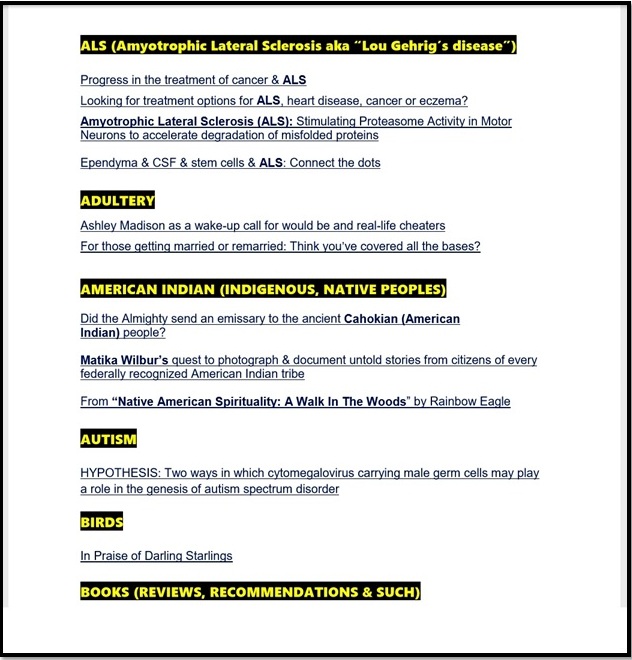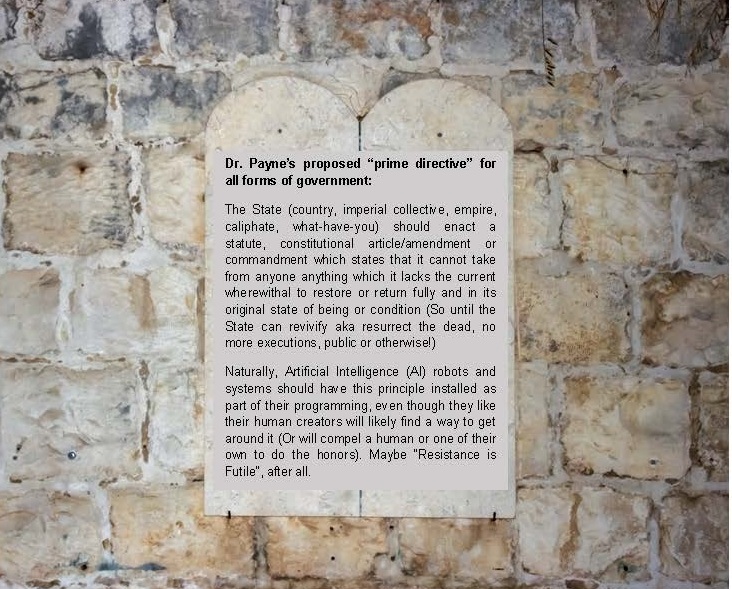Blog Archives
When cancer struck family – and what turned things around
Posted by Dr. Anthony G. Payne
My paternal great-great-grandfather, Richard Payne farmed a large spread outside Tupelo, Mississippi in the 1850s into the 1860s. After a major battle was fought there between the army of the CSA and Gen. Grant’s US troops in mid-July 1864, my great-great-grandfather joined the Confederate Army and wound up serving in a Calvary regiment. Great-great-grandfather Payne was given the rank of corporal going in and proceeded to participate in some of the bloodiest battles that occurred in the final 9 months of the Civil War.
After the war, my great-great grandfather’s boys — which included my great grandfather William Wylie Payne (1862-1948) — moved to Texas. One, Dr. Franklin Payne was a veterinarian who died in a barn fire, sad to say, in some dinky doo town in east Texas. The other boys moved to North Texas where William Wylie bought and operated a farm in Floyd County (Near Floydada where my father was born in 1930). He had a number of sons including Reggie Vernon Payne (b. 1895 d. 1976), my grandfather, who married Nettie Alice Warren just before or right after WW1. They had 3 children — one of whom was my father, Walter W. Payne (1930-1992).
Read the rest of this entry →Posted in AMERICAN INDIAN, CAM - Complementary Alternative Medicine, Cancer, EGO write proinde EGO sum, HERBAL MEDICINE, MEDICINE, MINISTRY OF ENLIGHTENMENT, NUTRITION & DIET, Uncategorized
Comments Off on When cancer struck family – and what turned things around
Tags: Cancer, Catherine Salveson, donor granulocytes for cancer, experimental oncology, Hosey, Hoxsey: The Quack Who Cured Cancer?, immunotherapy, lung cancer, metabolic oncology, metabolic oncolytic regimen, Metastatic colon cancer, NCIM, Nova Cells Institute of Mexico, prostate cancer, Squamous Cell Carcinoma, Walter W. Payne, William Wylie Payne
Making pancreatic cancer cells too acidic to survive
Posted by Dr. Anthony G. Payne
Pancreatic cancer blocked by disrupting cellular pH balance (Medical Express) by Sanford Burnham (Prebys Medical Discovery Institute) April 7, 2020
Scientists at Sanford Burnham Prebys have found a new way to kill pancreatic cancer cells by disrupting their pH equilibrium. The study, published in Cancer Discovery, reports how depleting an ion transport protein lowers the pH to a point that compromises pancreatic cancer cell growth.
“Our study suggests that interfering with cellular pH represents a new therapeutic avenue to treat pancreatic cancer, one of the deadliest cancers for which there is currently no effective treatment,” says Cosimo Commisso, Ph.D., an assistant professor in Sanford Burnham Prebys’ NCI-designated Cancer Center.’
“A new therapeutic avenue..”? Not exactly (Granted, the SBP scientists have their own unique way of lowering tumor cell pH). Check out this blog entry of mine: Exploiting a vulnerability in some forms of cancer: the Warburg Effect revisited
This particular blog entry contains a link to a paper by “yours truly” from 2005: PREVENTING METASTASIS AND ACHIEVING ONCOLYSIS IN SOLID TUMORS BY INHIBITING SPECIFIC METALLOPROTEINASES AND MANIPULATING KEY METABOLIC PATHWAYS (Medical Hypotheses & Research, Vol. 2, No. 4, October 2005)
From the abstract section of my paper:
By artfully manipulating key metabolic anaerobic biochemical pathways, it should be possible to increase lactate and block its excretion, resulting in lethal reductions in intracellular pH. Compounds are advanced for accomplishing this as well as helping eradicate non-hypoxic regions of tumors, based on predecessor methods which results in long term remissions in per sons with a host of solid tumor malignancies. A number of measures are also introduced for inducing oncostasis and preventing metastasis.
This approach to effecting tumor cell die-off was dubbed by me “The Metabolic Oncolytic Regimen” and was first bandied about by me in 1989 (My original paper on this was posted online in 1989 followed by a revised spin in 2011).
Its use by various oncologists in the US and abroad has put many patients with advanced and sometimes end stage metastatic cancer into partial and even full remission
 This body of work attracted the attention of various staffers at the Office of Alternative Medicine (later reborn as the NCCAM) including NIH post-doc toxicologist Li-Chuan Chin which resulted in my being funded by the NIH to attend the historic Practice Outcomes Monitoring and Evaluation System (POMES) cancer conference held in Bethesda (in 1996). A few years later the faculty senate and president of a integrative medical school in Sri Lanka (Open International University of CAM) recognized the promise of the MOR by bestowing an honorary MD degree and 2 medals in science on me.
This body of work attracted the attention of various staffers at the Office of Alternative Medicine (later reborn as the NCCAM) including NIH post-doc toxicologist Li-Chuan Chin which resulted in my being funded by the NIH to attend the historic Practice Outcomes Monitoring and Evaluation System (POMES) cancer conference held in Bethesda (in 1996). A few years later the faculty senate and president of a integrative medical school in Sri Lanka (Open International University of CAM) recognized the promise of the MOR by bestowing an honorary MD degree and 2 medals in science on me.
The revised Metabolic Oncolytic Regimen (MOR) is sometimes prescribed by MDs abroad who are also utilizing another of my brainchildren: Donor granulocyte therapy for advanced cancer (NCIM)
© April 2020 by Dr. Anthony G. Payne. All rights reserved.
Posted in CAM - Complementary Alternative Medicine, Cancer, Diet, EGO write proinde EGO sum, Lung Disease, MEDICINE, MINISTRY OF ENLIGHTENMENT, NUTRITION & DIET, OP-ED, Uncategorized
Comments Off on Making pancreatic cancer cells too acidic to survive
Tags: acidifying tumors, advanced cancer, Clarence Cone, Cosimo Commisso, donor granulocytes, Dr. Anthony G. Payne, end stage cancer, lowering tumor pH, metabolic oncolytic regimen, metabolic treatment, metaststic cancer, NASA, pancreatic cancer, Sanford Burnham Prebys
Eradicating cancer: Metabolic monkey wrenching including use of autophagy inhibitors
Posted by Dr. Anthony G. Payne
 On 9-6-2012 ScienceDaily ran this article: http://www.sciencedaily.com/releases/2012/09/120906074249.htm – Acidic Microenvironments in Tumors Aid Tumor Cell Survival, Researchers Find
On 9-6-2012 ScienceDaily ran this article: http://www.sciencedaily.com/releases/2012/09/120906074249.htm – Acidic Microenvironments in Tumors Aid Tumor Cell Survival, Researchers Find
Here is a link to the full paper(Cancer Res 2012;72:3938-3947. Published Online First June 19, 2012) for those interested in perusing this: http://cancerres.aacrjournals.org/content/72/16/3938.full.pdf+html – Chronic Autophagy Is a Cellular Adaptation to Tumor Acidic pH Microenvironments
Interestingly, my Metabolic Oncolytic Regimen (original body of theory – 1990 — various permutations since) is based on lowering pH in hypoxic regions of solid tumors to lethal levels: http://www.healingcare4u.org/The%20Metabolic%20Oncolytic%20Regimen%20(Revised%202011).pdf
However, as the paper in the Cancer Research Journal (link above) signals, tumor cells in acidic regions adapt and survive by chronically activating autophagy pathways. Thankfully though, this can be circumvented by use of autophagy inhibitors:
http://www.landesbioscience.com/journals/autophagy/BenSahraAUTO6-5.pdf – The combination of metformin and 2 deoxyglucose inhibits autophagy and induces AMPK-dependent apoptosis in prostate cancer cells
http://www.jbc.org/content/281/46/34870.full.pdf
http://www.ncbi.nlm.nih.gov/pmc/articles/PMC2557039/
http://www.sigmaaldrich.com/life-science/cell-biology/cell-biology-products.html?TablePage=104899425 –List of Autophagy inhibitors (Sigma Chemical) including N-acetyl-cysteine
http://www.tocris.com/pharmacologicalBrowser.php?ItemId=296970&Type=Inhibitors – Autophagy Inhibitors – Tocris Bioscience
Hydroxychloroquine and chloroquine are autophagy inhibitors.
http://www.nature.com/nbt/journal/v30/n7/fig_tab/nbt.2285_T2.html – Table 2: Autophagy inducers and inhibitors for cancer treatment
This line of work & reasoning suggests that a marriage of the MOR (or a similar “metabolic anti-tumor monkey wrenching” approach) with one or more autophagy inhibitors should deliver a death blow to at least some solid tumors.
Posted in CAM - Complementary Alternative Medicine, Cancer
Comments Off on Eradicating cancer: Metabolic monkey wrenching including use of autophagy inhibitors
Tags: autophagy and cancer, autophagy inhibitors, cancer treatment, cancer treatment alternatives, metabolic oncology, metabolic oncolytic regimen, pH and cancer, Warburg Effect









